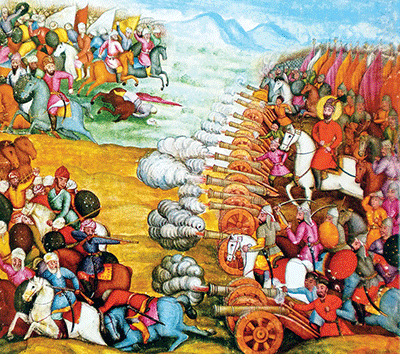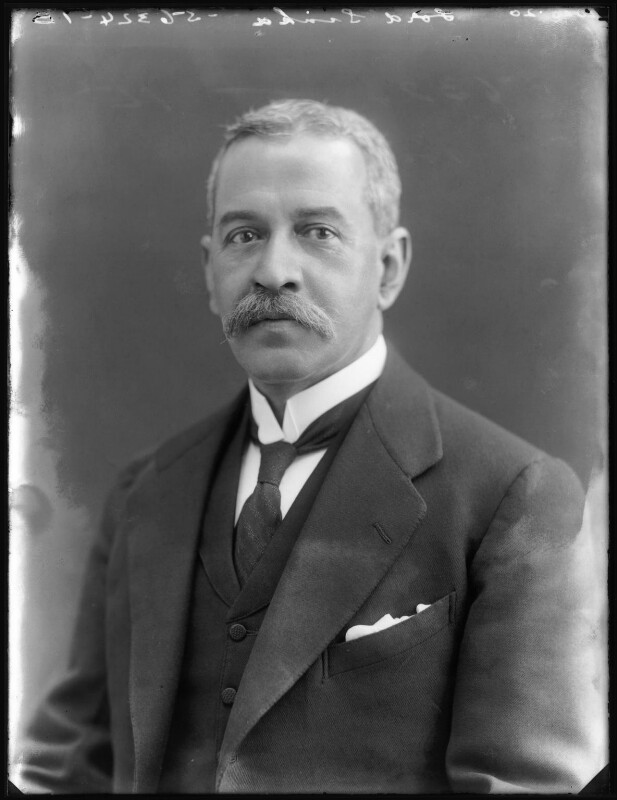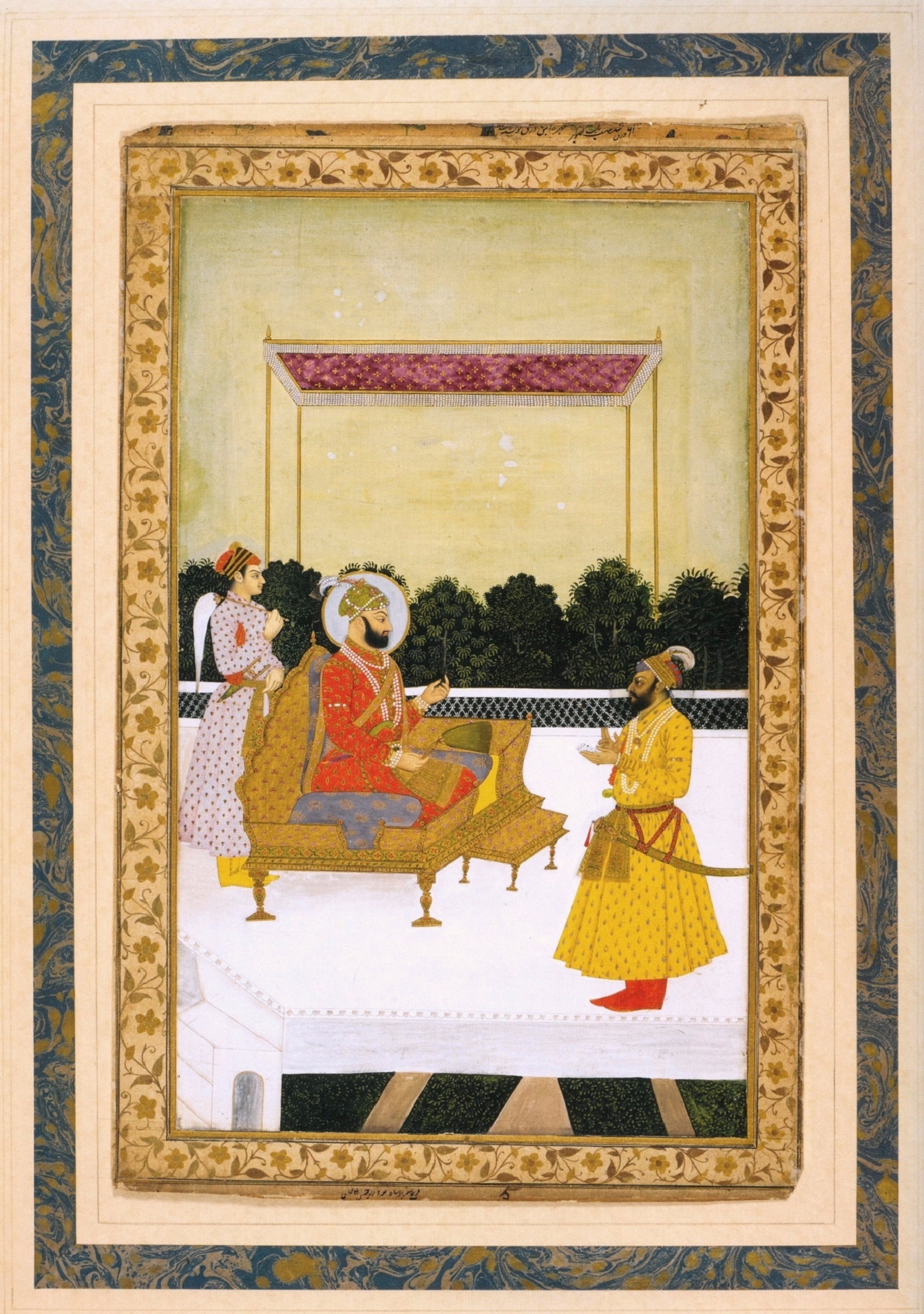|
Khande Rao Dabhade
Khanderao Dabhade (born Khandoji Dabhade, ; – 27 September 1729) was a Maratha general who was appointed as Senapati, or commander-in-chief, by Maratha Emperor Shahu I in recognition of his military achievements. He is credited with leading the Maratha expansion in the Gujarat region by defeating the Mughals. In 1718, he led the Maratha forces dispatched to Delhi at the request of the Sayyid Brothers to depose Mughal Emperor Farrukhsiyar Farrukhsiyar (; 20 August 16839 April 1719), also spelled as Farrukh Siyar, was the tenth Mughal emperors, Mughal Emperor from 1713 to 1719. He rose to the throne after deposing his uncle Jahandar Shah. He was an emperor only in name, with all .... Early life Military expeditions and conflicts Death and succession Legacy References Notes Citations Bibliography * * {{DEFAULTSORT:Dabhade, Khanderao Year of birth missing Indian nobility 1729 deaths People from Talegaon 18th-century nobility ... [...More Info...] [...Related Items...] OR: [Wikipedia] [Google] [Baidu] |
Senapati
Senapati ( , ''sena'' meaning "army", ''Pati (title), pati'' meaning "lord") is a title in ancient India denoting the rank of general (military), General. It was a hereditary title of nobility used in the Maratha Empire. During wartime, a ''Sardar Senapati'' or ''Sarsenapati'' (also colloquially termed ''Sarnaubat'') functioned as the Commander-in-Chief of all Maratha Army, Maratha armies, coordinating the commands of the various ''Sardars'' in battle. Ranking under the heir-apparent crown prince (yuvaraja) and other hereditary princes (rajkumar), the title ''Senapati'' most closely resembles a United Kingdom, British Duke or Germans, German ''Herzog'' in rank and function. On occasion, the title Mahasenapati (Sanskrit: महा ''maha-'' meaning "great") was granted; this equates to Field marshal, Field Marshal, and closely resembles a Grand Duke or a German ''Großherzog''. Unlike ''Sardar'', ''Senapati'' is a primogeniture hereditary title that is passed on to the eldest so ... [...More Info...] [...Related Items...] OR: [Wikipedia] [Google] [Baidu] |
Gujarat Subah
The Gujarat Subah () was a province (subah) of the Mughal Empire, encompassing the Gujarat region. The region first fell under Mughal control in 1573, when the Mughal emperor Akbar (r. 1556–1605) defeated the Gujarat Sultanate under Muzaffar Shah III. Muzaffar tried to regain the Sultanate in 1584 but failed. Gujarat remained the Mughal province governed by the Subahdar, viceroys and Subahdar#Nazim, officers appointed by the Mughal emperors from Delhi. Akbar's foster brother Mirza Aziz Kokaltash was appointed as the subahdar (viceroy) who strengthened Mughal hold over the region. The nobles of former Sultanate continued to resist and rebel during the reign of the next emperor Jahangir (1605–1627) but Kokaltash and his successor subahdars subdued them. Jehangir also permitted the British East India Company to establish factories in Surat and elsewhere in Gujarat. The next emperor Shah Jahan (1627–1658) expanded his territories in south and his subahdars made hold over Kat ... [...More Info...] [...Related Items...] OR: [Wikipedia] [Google] [Baidu] |
1729 Deaths
Events January–March * January 8 – Frederick, the eldest son of King George II of Great Britain is made Prince of Wales at the age of 21, a few months after he comes to Britain for the first time after growing up in Hanover. For 23 years, Frederick is heir apparent to the British throne, but dies of a lung injury in 1751. * January 19 – At the age of 14, Joseph (José), Prince of Brazil, son of King John V of Portugal, is married to the 10-year-old Princess Mariana Victoria of Spain, eldest daughter of King Philip V of Spain. In 1750, the couple become King Joseph I and Queen Consort Mariana Victoria of Spain. * February 14 – King Philip V of Spain issues a royal '' cedula'', directing an effort to offer incentives to families from the Canary Islands for settlements in New Spain north of the Rio Grande in the modern-day U.S. state of Texas (→ Canarian Americans). * February 24 (February 13 O.S.) – In the city of Resht in Per ... [...More Info...] [...Related Items...] OR: [Wikipedia] [Google] [Baidu] |
Indian Nobility
Following the final collapse of the Mughal Empire, Mughal Dynasty in Indian Rebellion of 1857, 1857 and the proclamation of the British Raj, British Indian Empire, the British continued to maintain and recognise many of the old Mughal and Hindu styles and titles, introducing a compound honours system which awarded those titles along with British noble and aristocratic titles and knighthoods. Uniquely, the Indian subcontinent was the only part of the British dominion where British hereditary titles were conferred upon British subjects not of European ancestry. All British titles and honours became obsolete after the formation of the modern Republic of India in 1950, though they continue to be recognised by the British government. Nobility in the aristocracy of the United Kingdom Indian baronets A baronetcy is a British hereditary title which was granted to several Indians, all of whom were merchants, for their services to trade and commerce. Extant *Jejeebhoy baronets, Jejeeb ... [...More Info...] [...Related Items...] OR: [Wikipedia] [Google] [Baidu] |
Year Of Birth Missing
A year is a unit of time based on how long it takes the Earth to orbit the Sun. In scientific use, the tropical year (approximately 365 solar days, 5 hours, 48 minutes, 45 seconds) and the sidereal year (about 20 minutes longer) are more exact. The modern calendar year, as reckoned according to the Gregorian calendar, approximates the tropical year by using a system of leap years. The term 'year' is also used to indicate other periods of roughly similar duration, such as the lunar year (a roughly 354-day cycle of twelve of the Moon's phasessee lunar calendar), as well as periods loosely associated with the calendar or astronomical year, such as the seasonal year, the fiscal year, the academic year, etc. Due to the Earth's axial tilt, the course of a year sees the passing of the seasons, marked by changes in weather, the hours of daylight, and, consequently, vegetation and soil fertility. In temperate and subpolar regions around the planet, four seasons are ... [...More Info...] [...Related Items...] OR: [Wikipedia] [Google] [Baidu] |
Farrukhsiyar
Farrukhsiyar (; 20 August 16839 April 1719), also spelled as Farrukh Siyar, was the tenth Mughal emperors, Mughal Emperor from 1713 to 1719. He rose to the throne after deposing his uncle Jahandar Shah. He was an emperor only in name, with all effective power in the hands of the two courtiers, Sayyid brothers. Early life Muhammad Farrukhsiyar was born on 20 August 1683 (9th Ramadan, Ramzan 1094 Anno Hegirae, AH) in the city of Aurangabad on the Deccan Plateau, Deccan plateau, to a Kashmiri mother, Sahiba Niswan. He was the second son of Azim-ush-Shan, the Grand son of emperor Bahadur Shah I and a great grandson of emperor Aurangzeb. In 1696, Farrukhsiyar accompanied his father on his campaign to Bengal. Aurangzeb recalled Azim-ush-Shan from Bengal in 1707 and instructed Farrukhsiyar to take charge of the province. Farrukhsiyar spent his early years governing Dhaka (in present-day Bangladesh) the capital city of Bengal Subah. In 1712 Azim-ush-Shan anticipated Bahadur Shah I' ... [...More Info...] [...Related Items...] OR: [Wikipedia] [Google] [Baidu] |
Mughal Emperor
The emperors of the Mughal Empire, who were all members of the Timurid dynasty (House of Babur), ruled the empire from its inception on 21 April 1526 to its dissolution on 21 September 1857. They were supreme monarchs of the Mughal Empire in the Indian subcontinent, mainly corresponding to the modern day countries of India, Pakistan, Afghanistan, and Bangladesh. They ruled many parts of India from 1526 and by 1707, they ruled most of the subcontinent. Afterwards, they declined rapidly, but nominally ruled territories until the Indian Rebellion of 1857, where they gave their last stand against the East India Company, British forces in India. The Mughal dynasty was founded by Babur (), a Timurid prince from the Fergana Valley (modern-day Uzbekistan). He was a direct descendant of both Timur and Genghis Khan. The Mughal emperors had significant Indian and Persian people, Persian ancestry through marriage alliances as emperors were born to Persian princesses. During the reign ... [...More Info...] [...Related Items...] OR: [Wikipedia] [Google] [Baidu] |
Sayyid Brothers
The Sayyid brothers were Hassan Ali Khan Barha, Abdullah Khan II and Hussain Ali Khan Barha, Syed Hussain Ali Khan, two powerful Mughal Empire, Mughal nobles who were active during the decline of the Mughal Empire. They were Punjabi Muslims belonging to the Sadaat-e-Bara clan of the Barha dynasty, who claimed to be Sayyids or the descendants of the Islamic prophet Muhammad. Their claim was generally not accepted, and they were said to be descendants of peasants from Punjab who migrated to the eastern part of Muzaffarnagar, Uttar Pradesh. According to historian Richard M. Eaton, they were "as native to South Asia as were Jats, Rajputs or Marathas." The brothers became highly influential in the Mughal court after Aurangzeb's death in 1707 and became de facto sovereigns of the empire when they began to seat and unseat emperors. They restored Mughal authority to Ajmer in Rajasthan with the surrender of Maharaja Ajit Singh, and the Jat leader Churaman. During their rule, the Sikh reb ... [...More Info...] [...Related Items...] OR: [Wikipedia] [Google] [Baidu] |
Delhi
Delhi, officially the National Capital Territory (NCT) of Delhi, is a city and a union territory of India containing New Delhi, the capital of India. Straddling the Yamuna river, but spread chiefly to the west, or beyond its Bank (geography), right bank, Delhi shares borders with the state of Uttar Pradesh in the east and with the state of Haryana in the remaining directions. Delhi became a union territory on 1 November 1956 and the NCT in 1995. The NCT covers an area of . According to the 2011 census, Delhi's city proper population was over 11 million, while the NCT's population was about 16.8 million. The topography of the medieval fort Purana Qila on the banks of the river Yamuna matches the literary description of the citadel Indraprastha in the Sanskrit epic ''Mahabharata''; however, excavations in the area have revealed no signs of an ancient built environment. From the early 13th century until the mid-19th century, Delhi was the capital of two major empires, ... [...More Info...] [...Related Items...] OR: [Wikipedia] [Google] [Baidu] |
Mughals
The Mughal Empire was an early modern empire in South Asia. At its peak, the empire stretched from the outer fringes of the Indus River Basin in the west, northern Afghanistan in the northwest, and Kashmir in the north, to the highlands of present-day Assam and Bangladesh in the east, and the uplands of the Deccan Plateau in South India.. Quote: "The realm so defined and governed was a vast territory of some , ranging from the frontier with Central Asia in northern Afghanistan to the northern uplands of the Deccan plateau, and from the Indus basin on the west to the Assamese highlands in the east." The Mughal Empire is conventionally said to have been founded in 1526 by Babur, a chieftain from what is today Uzbekistan, who employed aid from the neighboring Safavid and Ottoman Empires Quote: "Babur then adroitly gave the Ottomans his promise not to attack them in return for their military aid, which he received in the form of the newest of battlefield inventions, the matchloc ... [...More Info...] [...Related Items...] OR: [Wikipedia] [Google] [Baidu] |
Shahu I
Shahu I (Shivaji Sambhaji Raje Bhonsale; ; 18 May 1682 – 15 December 1749) was the fifth Chhatrapati or head of state of the Maratha Empire founded by his grandfather, Chhatrapati Shivaji Maharaj, Shivaji I. He was born into the House of Bhonsle (Royal House), Bhonsle family and was the son of Chhatrapati Sambhaji Maharaj, Sambhaji I and Yesubai Bhonsale, Yesubai. At a young age, he was taken into custody at the Siege of Raigad by Mughal Empire, Mughal emperor Aurangzeb, and held captive. He was released from captivity after the death of Aurangzeb in the hope of engineering an internecine struggle among the Maratha factions of Tarabai and Shahu. Shahu emerged victorious in the bloody Battle of Khed and was crowned as Chhatrapati. During Shahu's reign, Maratha power and influence extended to much of central and western India, which had then created a strong Maratha Kingdom. After his death, his ministers and generals such as the Maratha Peshwa and Generals from Bhat Family, ... [...More Info...] [...Related Items...] OR: [Wikipedia] [Google] [Baidu] |
Maratha Empire
The Maratha Empire, also referred to as the Maratha Confederacy, was an early modern India, early modern polity in the Indian subcontinent. It comprised the realms of the Peshwa and four major independent List of Maratha dynasties and states, Maratha states under the nominal leadership of the former. The Marathas were a Marathi language, Marathi-speaking peasantry group from the western Deccan Plateau (present-day Maharashtra) that rose to prominence under leadership of Shivaji (17th century), who revolted against the Bijapur Sultanate and the Mughal Empire for establishing "Hindavi Swarajya" (). The religious attitude of Aurangzeb, Emperor Aurangzeb estranged Kafir, non-Muslims, and the Deccan wars, Maratha insurgency came at a great cost for his men and treasury. The Maratha government also included warriors, administrators, and other nobles from other Marathi people, Marathi groups. Shivaji's monarchy, referred to as the Maratha Kingdom, expanded into a large realm in the 18th ... [...More Info...] [...Related Items...] OR: [Wikipedia] [Google] [Baidu] |










